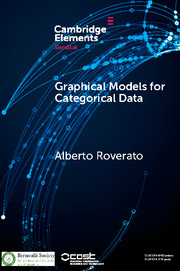Element contents
Graphical Models for Categorical Data
Published online by Cambridge University Press: 16 June 2017
Summary
- Type
- Element
- Information
- Series: SemStat ElementsOnline ISBN: 9781108277495Publisher: Cambridge University PressPrint publication: 24 August 2017
Bibliography
- 5
- Cited by



